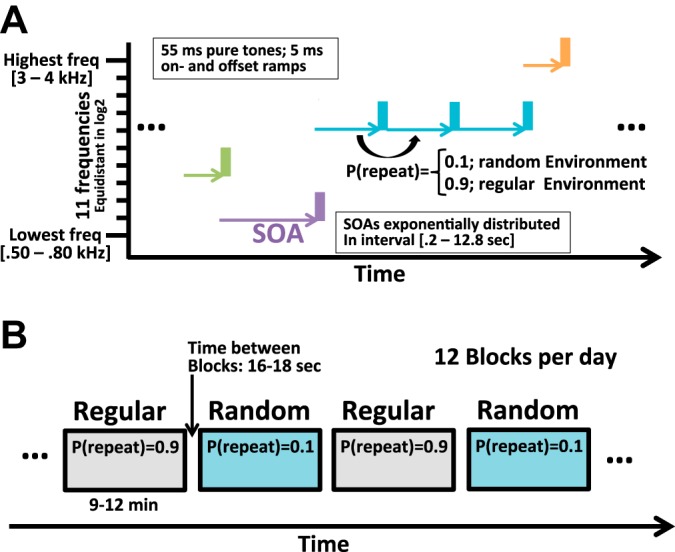Fig. 3.

Auditory paradigm. A: subjects passively listened to tones of random auditory frequency presented at random times. During each recording session a new set of 11 tones was generated. The lowest (highest) tone had an audiofrequency randomly picked between 500 and 750 Hz (3,000 and 4,000 Hz). The other tones were spaced equidistantly in log2 space. Stimulus onset asynchronies were drawn from a mix of 2 exponentially truncated distributions with time constants between 300–600 and 1,000 to 2,000 ms, respectively. A minimum of 200 ms was added to all SOAs, and values above 12.8 s were set to 12.8 s. An auditory event was determined by tone identity (i.e., auditory frequency) and the preceding SOA. B: in alternating blocks of 9–12 min in duration, tones were presented in either a regular or a random environment. In the regular environment, an SOA-tone pair had a 90% chance of being repeated. In the random environment, the probability of a repeated pair was 10%.
